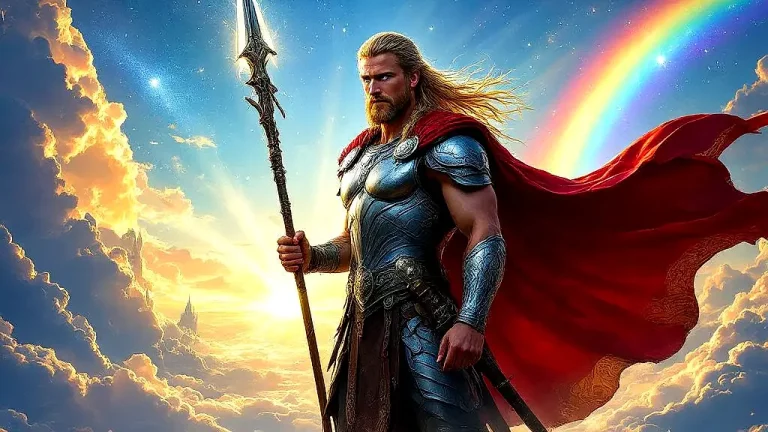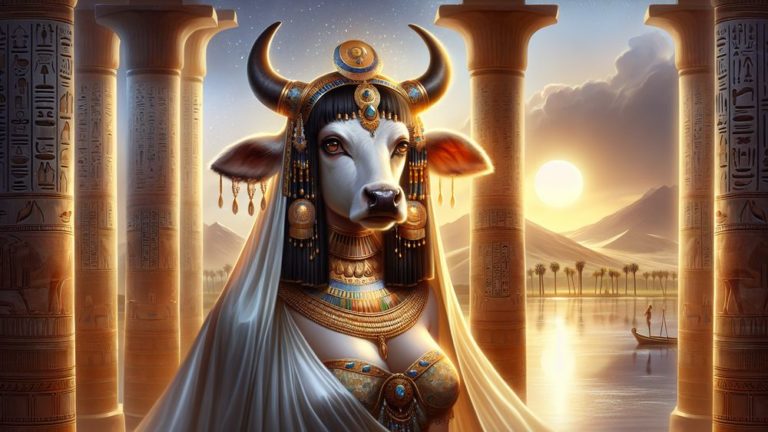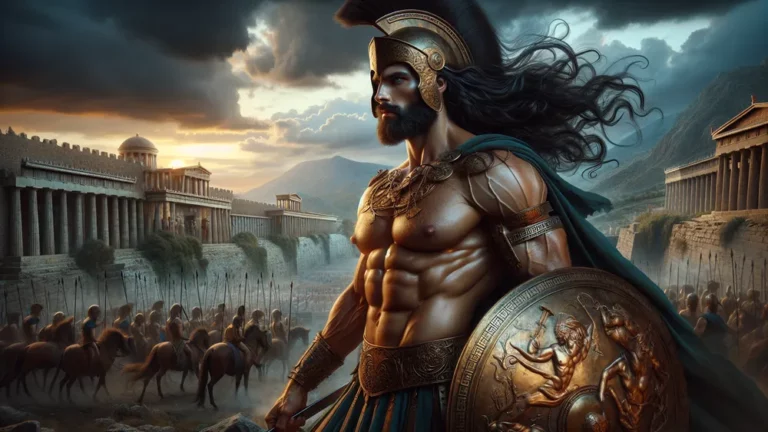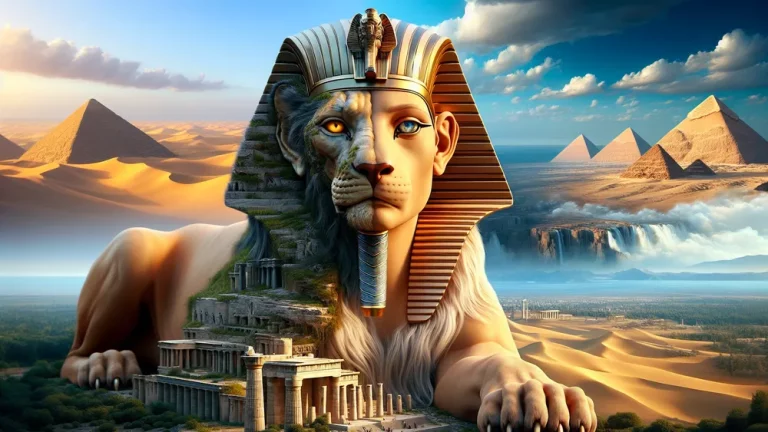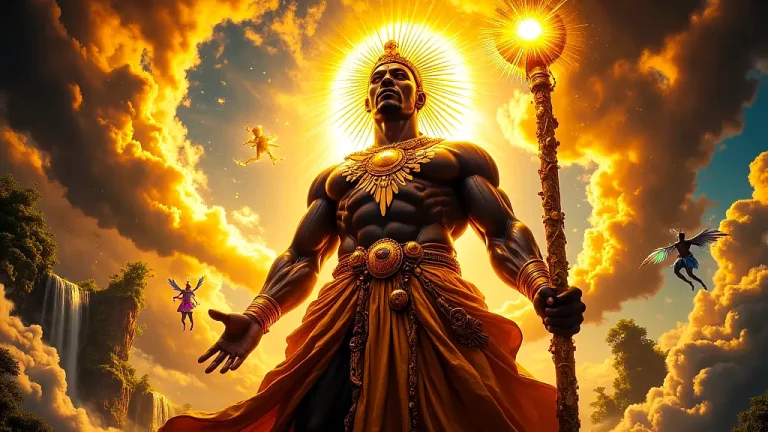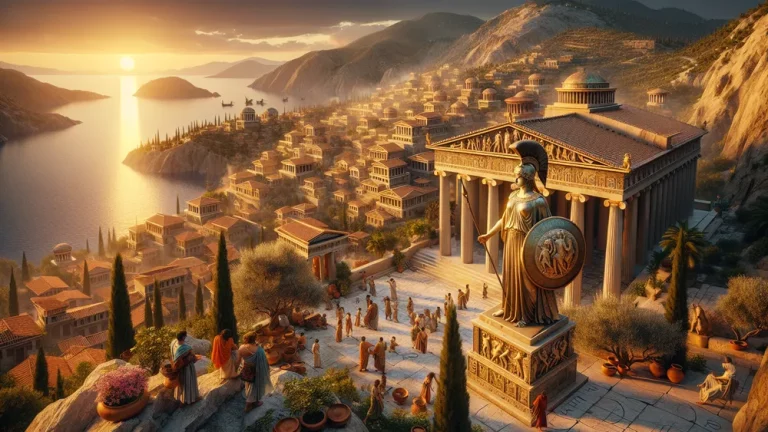Hebe: Greek Goddess Of Youth And Daughter Of Zeus And Hera
Thanks for joining this look into Hebe, the Greek goddess of youth and the daughter of the powerful Zeus and the well-respected Hera. Think of Hebe as the forever sign of youth, similar to the lively energy of a young person, who means happiness and life to a family party.
Key Points:
- Hebe is the Greek goddess of youth.
- She is the daughter of Zeus and Hera.
- Her main job was to serve ambrosia and nectar to the gods.
- Hebe married Heracles, connecting the mortal and divine worlds.
- Common symbols linked to her include a cup, ivy, and the fountain of youth.
- She was worshipped in temples, with festivals like Hebeia celebrating youth.
- Hebe still appears in modern art, literature, and pop culture.
In Greek stories, Hebe’s presence with the gods was like a fresh wind, giving new life and keeping their forever youth. While we look at her story, we’ll see her origins, her main parts, and her lasting legacy in both old and modern times.
If you are new to Greek stories or want to know more, this journey through Hebe’s tales and meanings will give a complete and interesting look at this amazing goddess.
Hebe: Overview and Key Facts
| Aspect | Details |
|---|---|
| Name | Hebe |
| Role | Goddess of Youth |
| Parents | Daughter of Zeus (King of the Gods) and Hera (Queen of the Gods) |
| Siblings | Ares, Hephaestus, and Eileithyia (and others) |
| Spouse | Heracles (Hercules in Roman stories) |
| Children | Alexiares and Aniketos |
| Symbols | Cup, Ivy, and Fountain of Youth |
| Main Roles | Cupbearer to gods, serving ambrosia and nectar |
| Important Stories | Marriage to Heracles, keeping the youth of the gods |
| How she was honored | Temples in Phlius and Sicyon, different rites and celebrations |
| Roman Counterpart | Juventas |
| Present-day appearances | In literature, art, and pop culture |
Getting to Know Hebe
To really get Hebe’s importance in Greek stories, it’s important to look at her background, and the parts she played among the gods, and also her family.
Hebe’s Background and Family
Hebe, the goddess of youth, was born to Zeus, the king of the gods, and Hera, the queen of the gods. This made her part of the strongest family in Greek mythology. Think of a royal family where every member has different jobs and duties; similarly, Hebe’s family was made up of important gods with special areas.
She had siblings like Ares, the god of war, Hephaestus, the god of blacksmiths and fire, and Eileithyia, the goddess of childbirth. When Hebe was born and growing up, she was there on Mount Olympus with her divine parents, who got her ready for her part among the gods.
- Father: Zeus, King of the Gods
- Mother: Hera, Queen of the Gods
- Siblings: Ares, God of War, Hephaestus, God of Blacksmiths and Fire, Eileithyia, Goddess of Childbirth
Hebe, the goddess of youth, was born to Zeus and Hera, making her part of a powerful family of gods on Mount Olympus.
Hebe’s Job in the Myths
In Greek stories, Hebe’s main job was being the cupbearer for the gods, which was very important for keeping things right on Mount Olympus. Think of Hebe making sure everyone stayed healthy and full of energy. Serving ambrosia and nectar was her job, and these divine foods made the gods live forever and stay young. By doing this job, Hebe helped the gods stay strong and able to do their tasks without growing old.
Her work at the divine meals meant the rejuvenation and endless youth that the gods enjoyed, thanks to her careful service.

Hebe’s Meanings and Traits
To understand Hebe’s importance, it’s good to look at the symbols and examples linked to her, and her looks in different kinds of art and writing.
Signs of Youth and Energy
Hebe is often seen with symbols that show youth and energy, and each has its own meaning. The cup means her job as the cupbearer for the gods, and it stands for nourishment and keeping youth forever. The ivy means everlasting life and immortality because ivy stays green all year. And the fountain of youth, lastly, is a strong symbol linked to Hebe, showing the idea of always renewing and endless youthful energy.
- Cup: Means nourishment and keeping youth forever.
- Ivy: Means everlasting life and immortality.
- Fountain of Youth: Shows always renewing and endless youthful energy.
How Hebe Shows Up in Art and Stories
Hebe is a common figure in old Greek art and writing, and people see her as young and beautiful with a special job. In sculpture, one famous statue by Antonio Canova is of her holding a cup, which means her special job as the cupbearer. In paintings, you often see Hebe giving nectar and ambrosia to the gods. In works like those by François Gérard, she looks calm and young.
In stories, she is often mentioned. For example, in Homer’s “Iliad,” she pours nectar for the gods. These examples show her link to youth, energy, and her special job.
Hebe’s Tales and Legends
To understand more about Hebe’s importance, let’s dig into the different myths and stories where she has a key part, and see how she deals with other gods and heroes.
Hebe and the Other Gods
Hebe’s dealings with other Olympian gods are important for understanding her role in Greek myths. As the daughter of Zeus and Hera, she has a big place on Mount Olympus. One main job she had was serving nectar and ambrosia to the gods, which shows how needed she was for keeping them immortal.
Known for her role in Homer’s “Iliad,” she is talked about as the goddess who pours nectar for the gods, showing her key role in their everyday lives. She is seen in many stories where her part with other gods is key. She often means working with her mother, Hera, in different tasks. In some stories, Hebe helps Hera with her chariot, which means her helpful role in the divine family.
Hebe’s relationship with her father, Zeus, is one of mutual respect and affection, showing she had a high place with the Olympians. Because of her family dealings, Hebe’s role extends to other big myths. She is notably in the story of Heracles, where she marries the hero after he becomes a god. This marriage not only lifts Heracles’ status but also makes Hebe a link between the mortal and divine worlds.

Her marriage to Heracles is an example of how her dealings with other gods and heroes make her important in Greek myths.
- Homer’s “Iliad”: Hebe gives nectar to the gods.
- Helps Hera: Works on divine tasks and Hera’s chariot.
- Marriage to Heracles: Links the mortal and divine worlds.
Hebe and Heracles’ Wedding
Hebe’s marriage to Heracles is one of the most famous marriages in Greek stories. When Heracles finished his Twelve Labors and got immortality, he was accepted to Mount Olympus and married Hebe. This marriage means the coming together of the divine and heroic worlds. Heracles, the best Greek hero, and Hebe, the goddess of youth, were joined.
Their marriage not only lifted Heracles’ status but also made clear Hebe’s role as a link between the mortal and divine. The pair had two kids, Alexiares and Aniketos, who, while not as famous as their parents, had their own place in myths.
Alexiares and Aniketos are linked with protecting and defending Mount Olympus, showing the strength and bravery from their dad, Heracles, and the eternal youth from their mom, Hebe. Their jobs, not very detailed in stories, add to the full picture of Greek myths, showing the ongoing importance of Hebe and Heracles’ marriage.
Hebe and Heracles’ marriage unites the worlds of gods and heroes, highlighting their significance in Greek myths through their children, who represent bravery and youth.
Hebe’s Worship and Ceremonies
Since we’ve looked at Hebe’s jobs and connections, let’s focus on how she was respected and remembered in old Greek times.
Places of Worship for Hebe
Many important temples and places respected Hebe across old Greece, each being proof of her importance. A well-known one was the place at Phlius, where she was born, and was respected alongside her mother, Hera. This place was a main spot for local worship and yearly events.
Another big place was the Temple of Hebe in Argos, part of a larger area for many gods. Moreover, Hebe had a dedicated altar at the Heraion of Argos, which was one of Greece’s largest and most important worship places. These were like today’s important locations that hold cultural and historical value, attracting people and faithful followers.
- Sanctuary at Phlius: Hebe’s birthplace, shared with Hera.
- Temple of Hebe in Argos: Part of a larger complex of deities.
- Altar at the Heraion of Argos: Located in one of Greece’s largest sanctuaries.
Celebrations and Rituals for Hebe
In ancient Greece, many customs and festivals were dedicated to Hebe, showing that she is the goddess of youth. An important festival was the Hebeia, held in her honor, especially in places such as Phlius and Argos. At these events, young people would join in athletic contests and dances, representing the energy and liveliness that Hebe herself had. These events are like modern-day youth festivals celebrating the energy and potential of the younger folks.
The festival was a tribute to Hebe and also a community event that strengthened social connections and celebrated the youth of the community. Customs dedicated to Hebe often included offerings of fresh fruits and flowers, representing renewal and growth. At her altars and temples, like the ones in Phlius and Argos, these offerings were made to get her blessings for eternal youth and vitality.
The importance of these practices lies in showing life’s cycle and the constant renewal of energy and spirit. Just as we might celebrate the start of spring with festivals and rituals for new beginnings, the ancient Greeks honored Hebe to keep their communities’ vitality and prosperity ongoing.
Comparing Myths
Since we’ve looked at how people remembered in ancient Greece Hebe, let’s now check out her Roman equivalent and see how their stories are different and the same.
Hebe’s Roman Version – Juventas
In Roman stories, Juventas is like Hebe, the goddess of youth. Much like Hebe, Juventas was linked with energy and liveliness that young people show. She had a big role in Roman life, and especially in ceremonies for young men. For example, the toga virilis, which means the transition from boyhood to manhood.
This can be compared to today’s graduation ceremonies that mean a big step into being an adult. While Hebe was known for being the gods’ cupbearer, Juventas was seen as a protector of young soldiers, and this emphasizes her role in the military.
Although there are some differences, both goddesses stand for the idea of youth and renewal, which means they were important in their own cultures.
Hebe in Today’s World
Now that we’ve learned about Hebe’s job in ancient stories and her Roman equivalent, let’s look at how Hebe still affects modern art, books, and media.
Modern Takes on Hebe in Art and Stories
In modern times, Hebe still gets artists and writers interested. She is seen in many types of current-day art and books. For example, the well-known sculptor Antonio Canova made a set of sculptures showing Hebe, capturing her young grace and beauty. People love these sculptures for their fine detail and lifelike look, like how modern stars are often shown in statues and pictures.
In books, Hebe appears in works like Nathaniel Hawthorne’s “The Marble Faun,” where she stands for eternal youth and the fleeting nature of beauty. Also, Hebe has been shown in many paintings, like those by the 18th-century artist Angelica Kauffman, who painted her in a style that matches the lasting charm of myth stories.
These modern works highlight Hebe’s long-lasting importance and the ongoing interest in youth and renewal.

Hebe continues to inspire artists and writers today, appearing in various artworks and literature that celebrate youth and beauty.
Hebe in Pop Culture
Hebe has left her impact in pop culture, being featured in many movies, books, and other ways that bring Greek mythology to today’s audience. For example, in the Percy Jackson series by Rick Riordan, Hebe is mentioned briefly, adding to the many mythological figures in the story. This is like how supporting characters in superhero films give depth to the main story.
In addition, Hebe is in films and TV shows that look at Greek myths, such as the animated Hercules: The Animated Series, where she is seen as a young and lively figure. Her influence also reaches video games, where characters based on Hebe often stand for youth and rejuvenation. These current interpretations help keep the mythology alive, making it easy to understand and interesting for new generations.

Pantheon of Greek Mythology
The Greek mythology Pantheon has a huge and detailed collection of gods, each with their own stories, traits, and areas they rule. From the mighty Zeus, ruler of the gods, to wise Athena, goddess of wisdom, the Greek gods and goddesses form a complex family with connected stories and amazing tales.
To get a full grasp of these holy figures, you can explore this full list with all Greek Gods, which gives lots of info on each god and their importance in old Greek times.
FAQs
Who are Hebe’s parents?
Hebe’s parents are Zeus, the king of the gods, and Hera, the queen of the gods.
What are Hebe’s symbols?
Hebe’s symbols include the cup, ivy, and the fountain of youth, each representing aspects of youth and rejuvenation.
What myths is Hebe involved in?
The myths Hebe is involved in include her role as the cupbearer of the gods and her marriage to Heracles.

How was Hebe worshipped in ancient Greece?
Hebe was worshipped in ancient Greece through rituals and festivals that honored her as the goddess of youth.


